Condsider
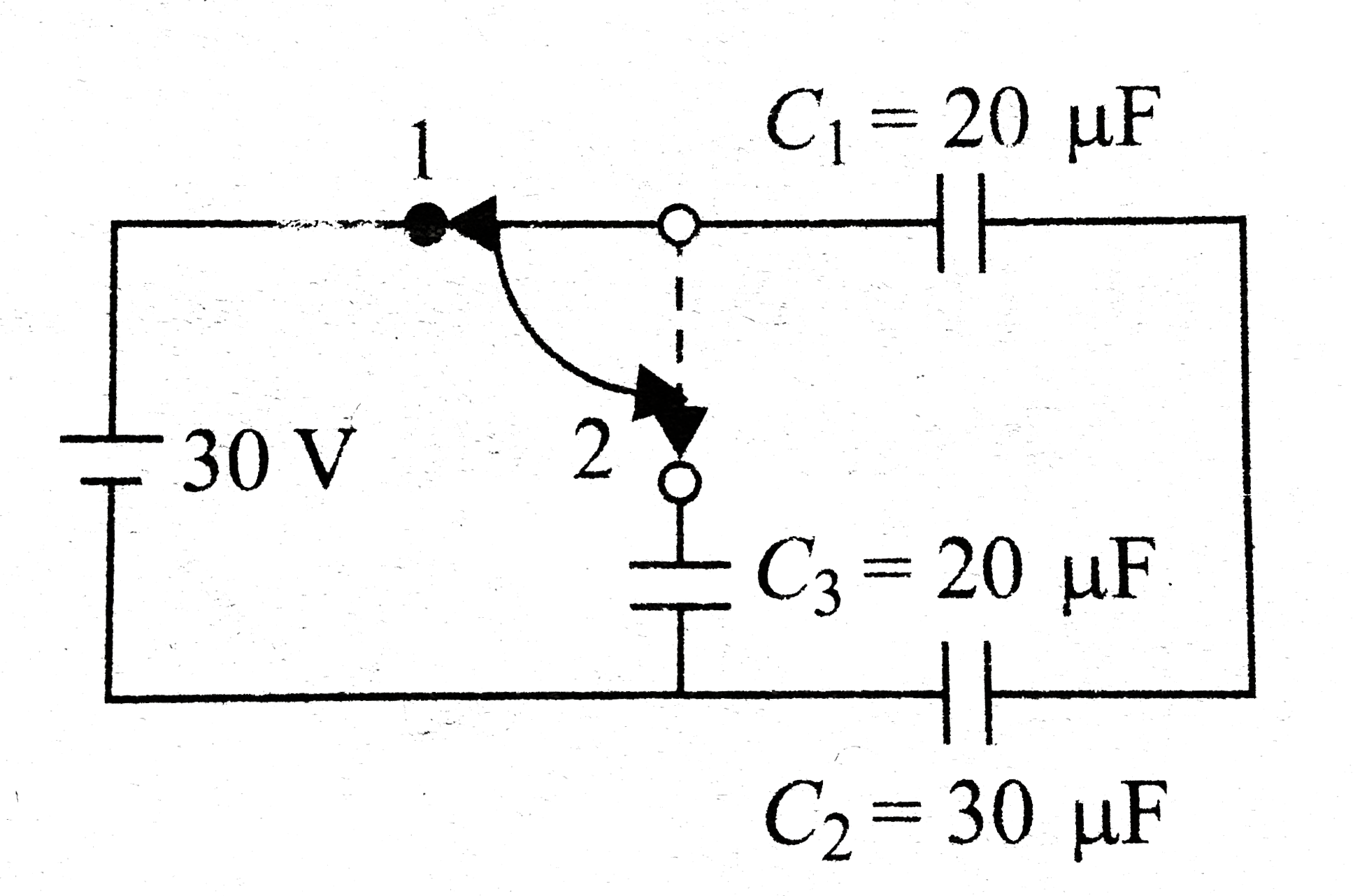 .
.
In the circuit shown is the switch can be shifted to positions 1 and 2 The charge on capacitor C1 when the switch is at position 1 is.
120μC
240μC
360μC
80μC
The correct Answer is:C
When switch is in position 1,
30=q20−q30=0 or q=360μC
Now, the switch is in position2,
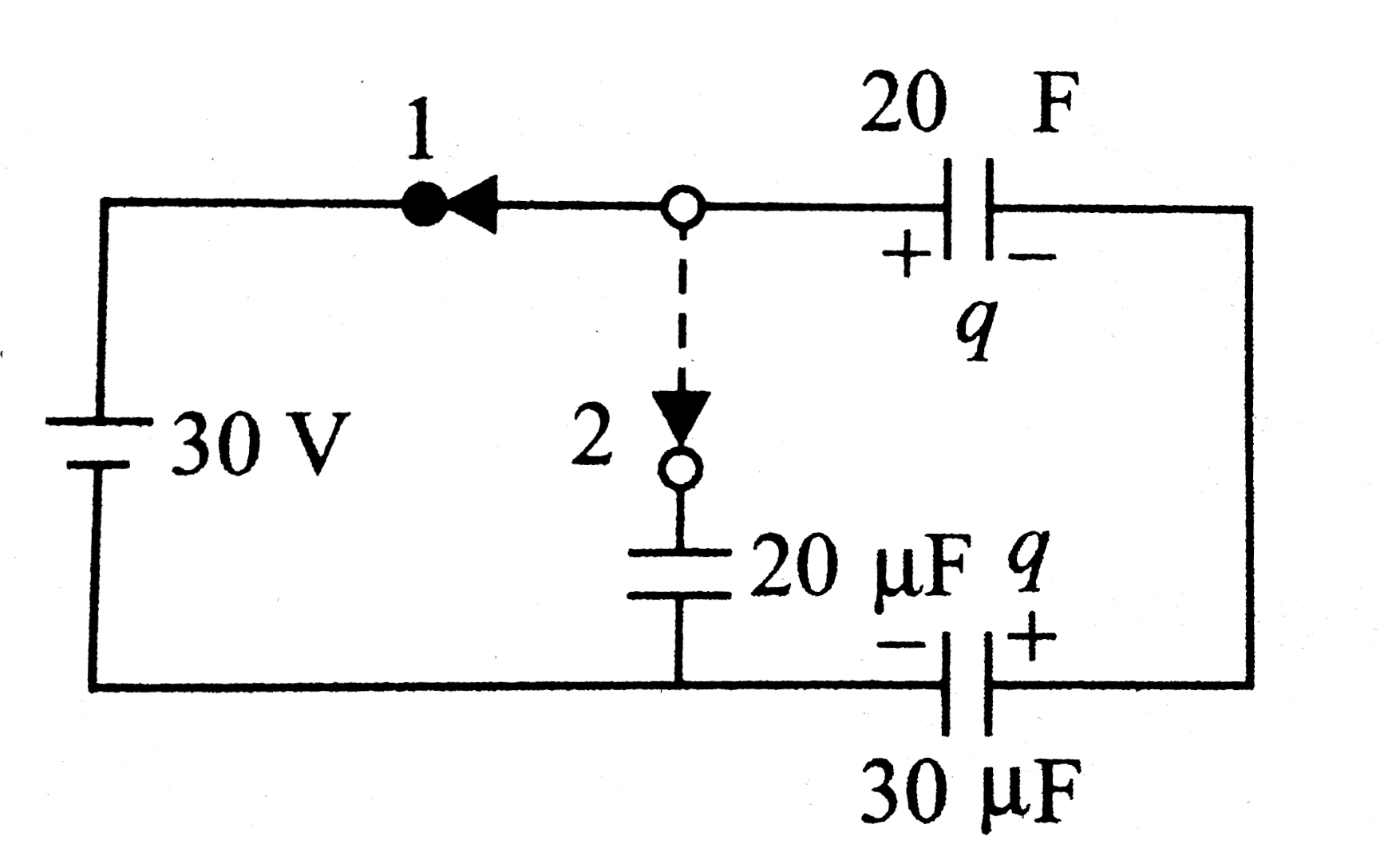 .
.
LoopABCD,
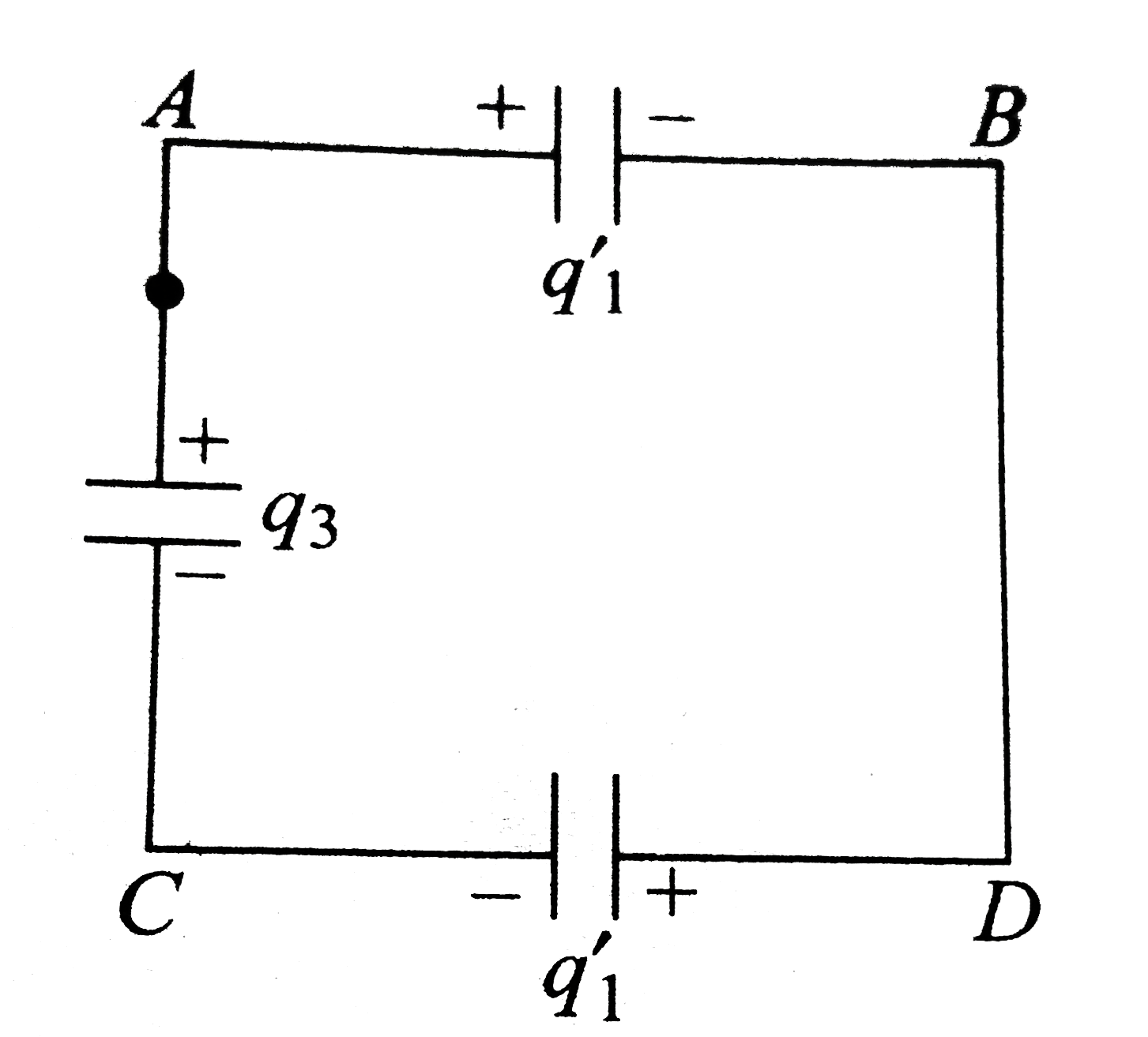
Q'120−Q'130+Q320=0
or −3q'1−2q1+3q3=0
or 5q'1=3q3 or q'1=35q3
8q35=360
q3=360×58=4502μC=225μC (ii)
q'1=35(4502)=135μC.
Topper's Solved these Questions
- BOOK - CENGAGE PHYSICS ENGLISHCHAPTER - CAPACITOR AND CAPACITANCEEXERCISE - Integer5videos
CAPACITOR AND CAPACITANCE
- BOOK - CENGAGE PHYSICS ENGLISHCHAPTER - CAPACITOR AND CAPACITANCEEXERCISE - Multile Correct11videos
CAPACITOR AND CAPACITANCE
- BOOK - CENGAGE PHYSICS ENGLISHCHAPTER - ATOMIC PHYSICSEXERCISE - ddp.4.315videos
ATOMIC PHYSICS
- BOOK - CENGAGE PHYSICS ENGLISHCHAPTER - CENGAGE PHYSICS DPPEXERCISE - subjective type51videos
CENGAGE PHYSICS DPP
Similar Questions
Condsider
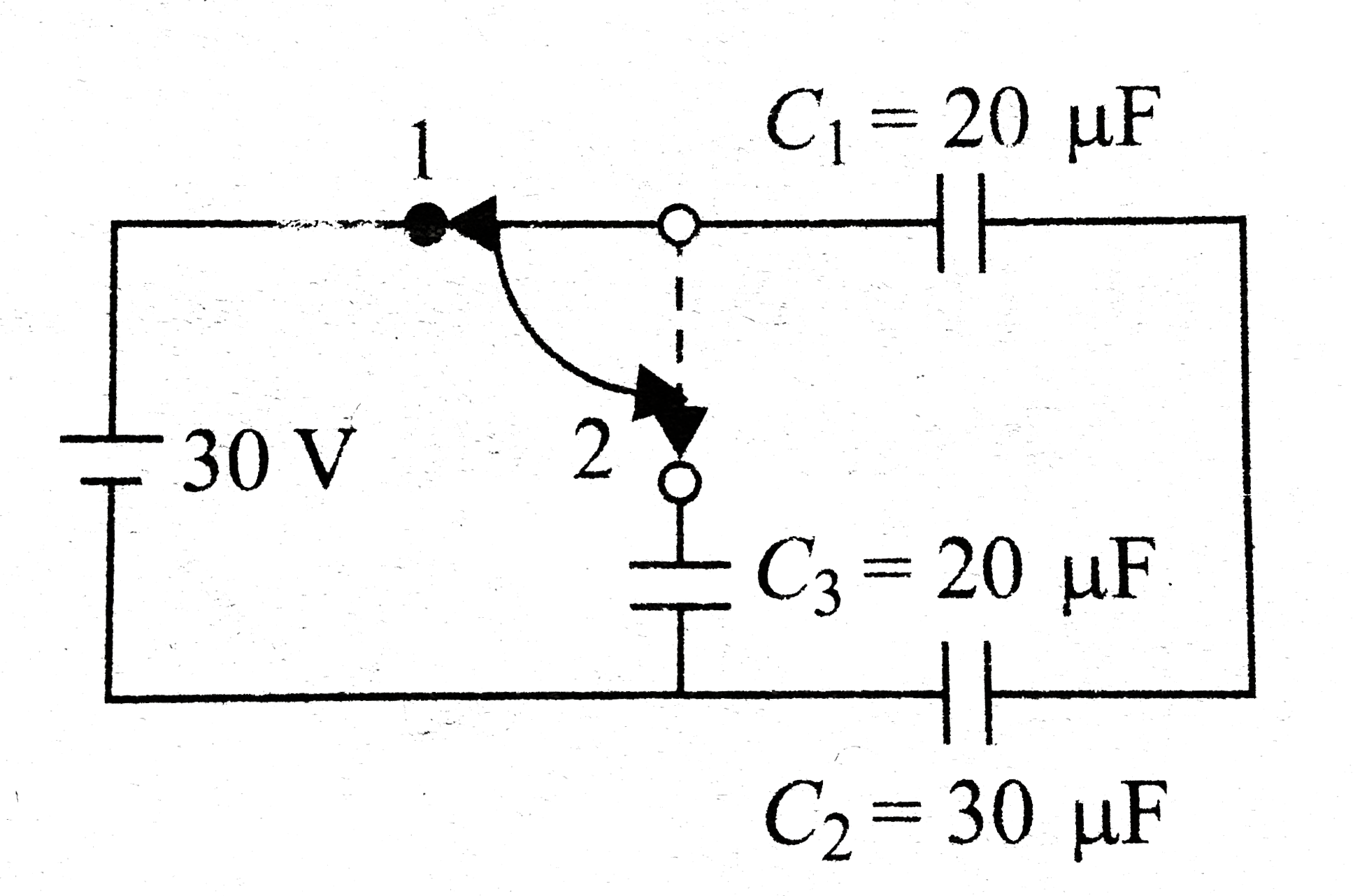 .
.
The charge on capacitor C1 is.View SolutionCondsider
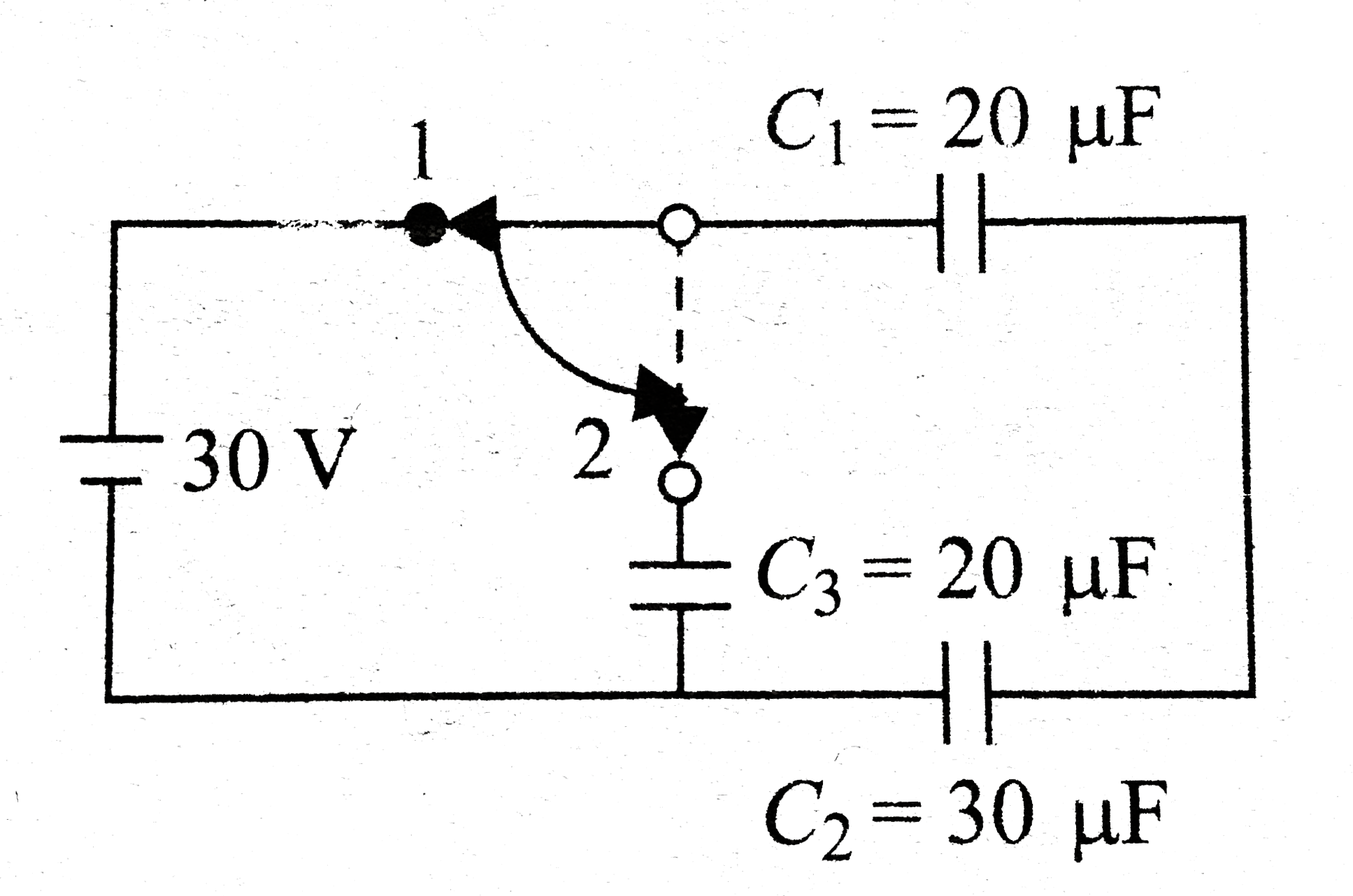 .
.
Now the switch is shifted to position 2. The charge appearing on capacitor C3 isView SolutionIn the circuit shown in figure switch S can be shift to position A or position B. Current though resistance is say i1 when switch is in position. A and when switch is in position B, then
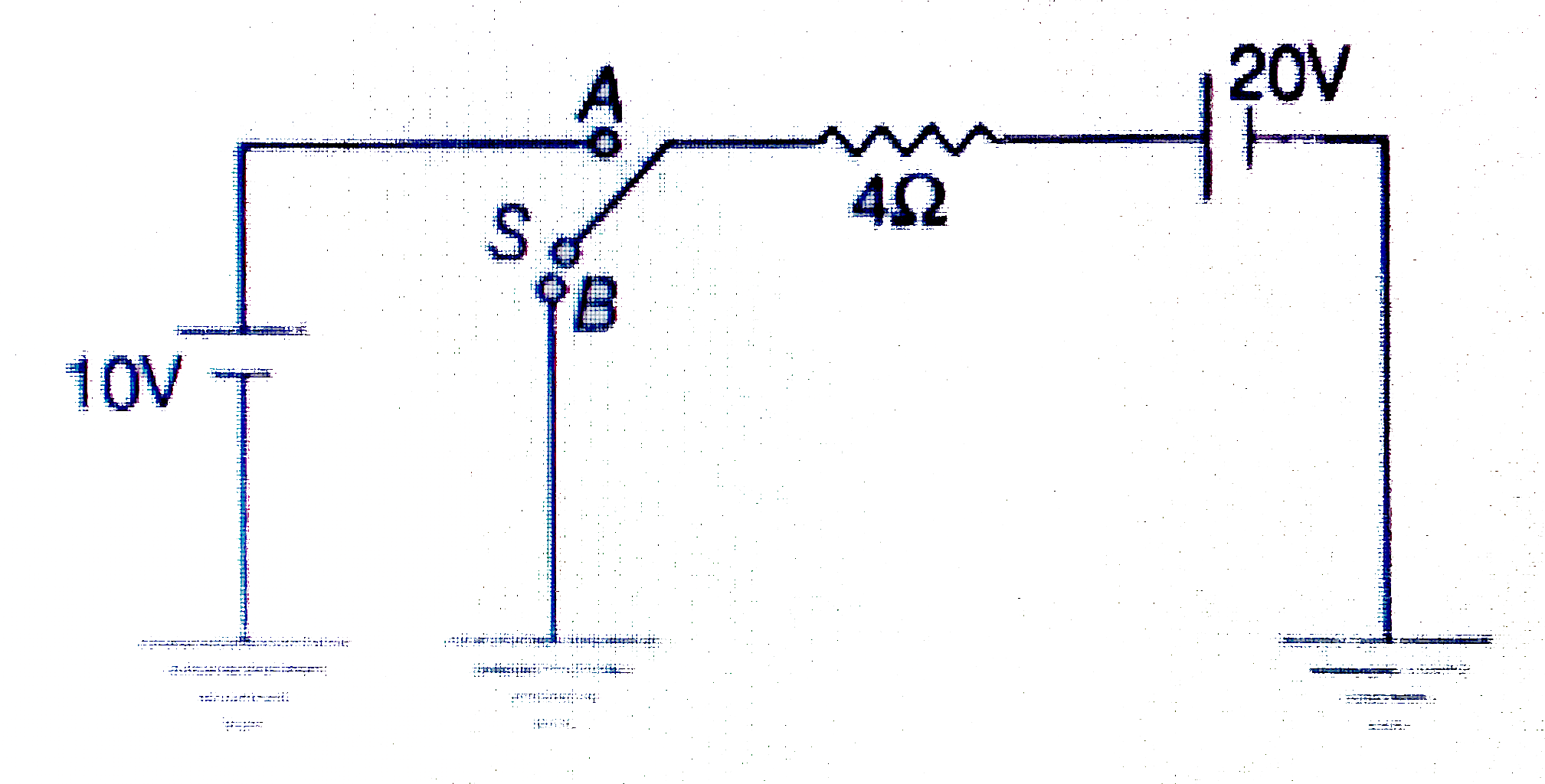 View Solution
View SolutionDNA parts which can switch their position are
View SolutionIn the given circuit diagram figure, switch Sw is shifted from position 1 to position 2. Then
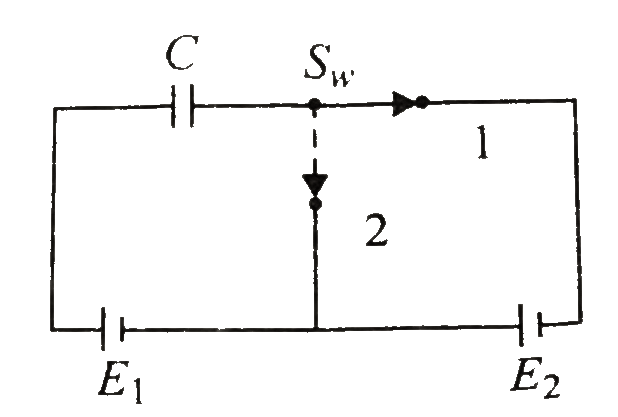 View Solution
View SolutionIn the given AC circuit, when switch S is at position 1, the source emf leads current by π6. Now, if the switch is at position 2, then
 View Solution
View SolutionThe circuit consists of two resistors (of resistance R1=20Ω and R2=10Ω), a capacitor (of capacitance C=10μF) and two ideal cells. In the circuit shown the capacitor is in steady state and the switch S is open
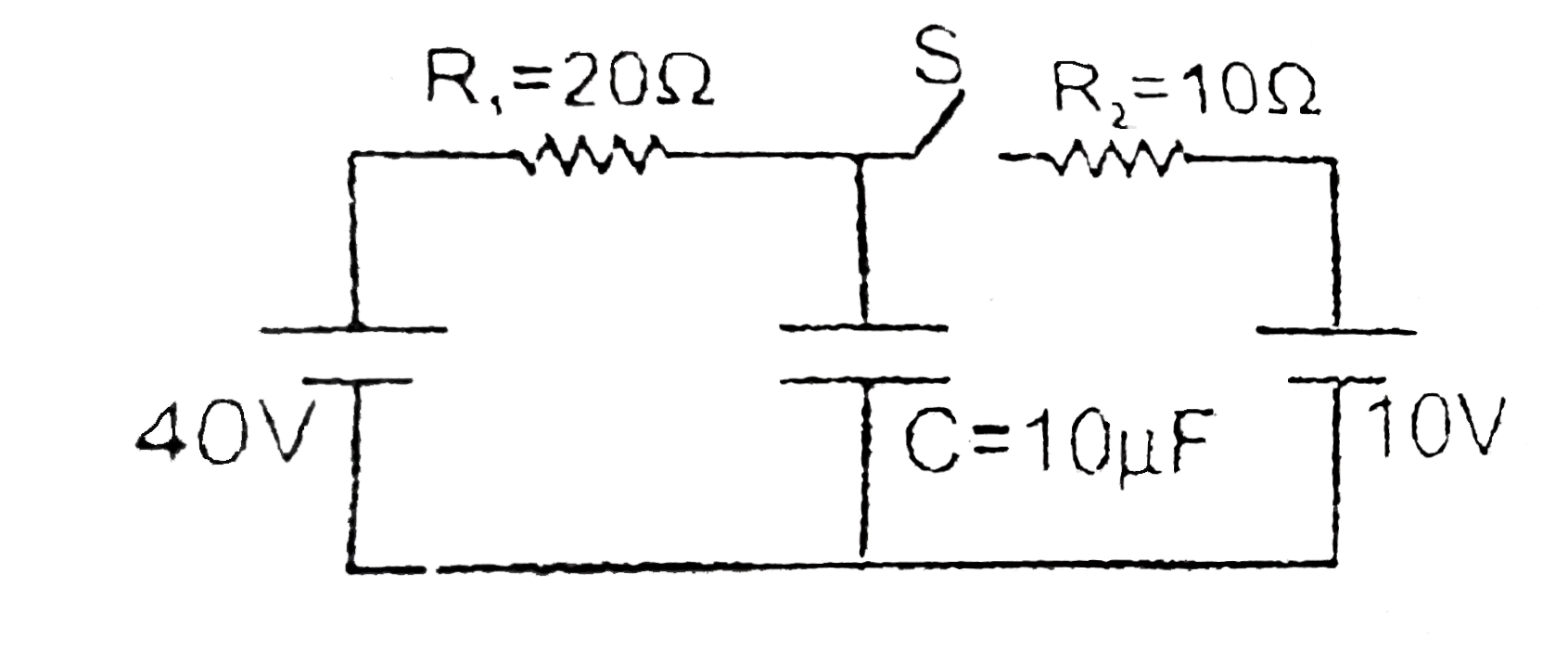
The charge on capacitor in steady state with switch S closed.View SolutionIn the circuit shown in fig. when the switch is closed, the capacitor charges with a time constant
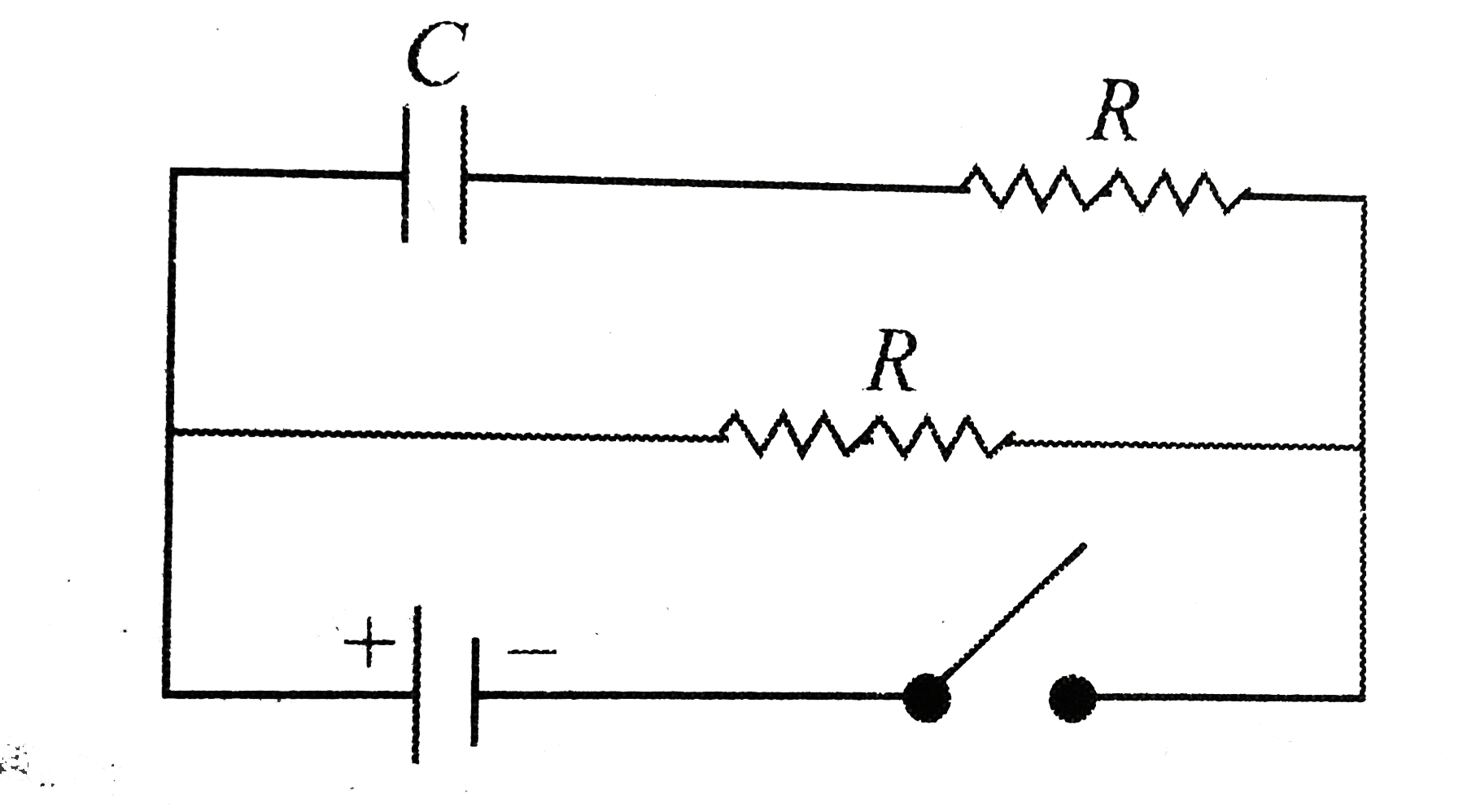 View Solution
View SolutionIn the circuit shown, the switch S is shifted to position 2 from position 1 at t=0, having been in position 1 for a long time.Find the current in the circuit as a function of time.
 View Solution
View SolutionIn the circuit shown, the switch S is shifted to position 2 from position 1 at t=0, having been in position 1 for a long time.Find the current in the circuit as a function of time.
 View Solution
View Solution

